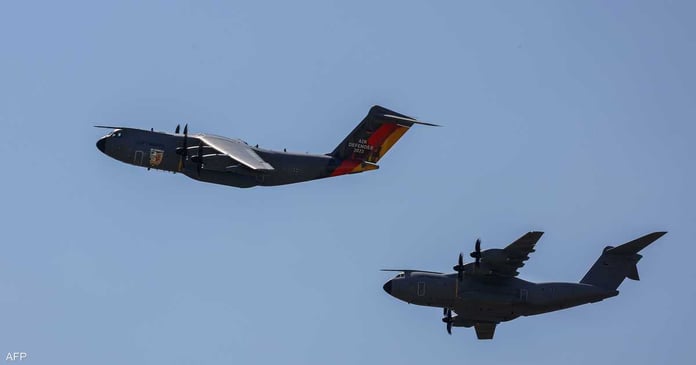The “Air Defender 23” maneuvers, hosted by Germany and launched from Monday to June 23, see the participation of 10,000 soldiers and 250 military aircraft from 25 NATO member and partner countries, including Japan and Sweden, candidate for NATO membership.
The exercises aim to strengthen interoperability and readiness to protect against aircraft, drone and missile attacks on cities and infrastructure, with other training activities including support to ground forces and missions evacuation.
Air tension between NATO and Russia For his part, the researcher specializing in military affairs at the Egyptian Center for Strategic Thinking and Studies, Mohamed Mansour, explained that the current maneuver can be seen in the context of the escalation of the air tension between NATO and Moscow, given the recurring air friction between NATO fighters which are active in NATO forward air bases, and among Russian fighters operating in the radius of the sea Black and Baltic Sea.
Mansour identified, in statements to “Sky News Arabia”, a number of indicators of this maneuver, saying:
The latest friction between NATO and Russian fighters, what happened between two Russian fighters and an American drone last March in the airspace of the Black Sea, as well as the interception of a fighter last May of two NATO naval patrol aircraft over the Baltic Sea. The Black Sea incident has increased the possibilities of air friction between the two sides, especially after Britain and Germany decided last March to send air units to assist in “air policing” missions. ” from NATO, which are stationed at air bases in Estonia and other countries, which Moscow has considered As part of strengthening NATO’s presence in Eastern Europe and increasing the number of NATO battle groups in the Baltic States. This aerial tension, the “manoeuvres” were among the most striking elements that were followed during the previous stage. The frequency of air maneuvers conducted by the alliance has increased in recent months, in particular the “Ramstein Alloy” air maneuvers, which have taken place since 2008 three times a year in the Baltic Sea range, the last time took place last January. The “at noon fixed” nuclear deterrence exercise, which took place last October, with the participation of 60 fighters, is considered one of the most important aerial maneuvers carried out in the previous period.
In the airspace of the North Sea, about 1,000 kilometers from Russian territory. . The scale and scope of the Air Defender maneuvers can in itself be taken as a message to Moscow that the alliance is cohesive and can mobilize large air forces in a short time. The scope of these maneuvers is significant as it includes 3 main air regions, the first includes northwestern Germany, the Netherlands and Denmark, the second includes eastern Germany to the borders Poland and the Czech Republic, and the second includes southwestern Germany and Luxembourg. , which means that significant parts of the North Sea and Baltic Sea airspace will be included in the exercises. At the operational level, these maneuvers, which should see the implementation of around 2,000 aerial sorties, consist in particular in testing the ability of NATO air forces to respond quickly in an emergency situation to an external attack against the one of the covenant countries.
Maneuver details
According to NATO, the main objective of this maneuver, which has the largest deployment of air forces in the history of the alliance, is to organize air operations with allied and partner air forces, where the emphasis is focused on maximizing and expanding cooperation between countries. . The maneuver is based on a collective defense scenario also called the Article 5 scenario, in which the Allies deploy their air forces into Germany to fight against the mixed occupation forces of an imaginary adversary. During joint operations, Allied air forces demonstrate their ability to defend NATO territory through rapid and decisive action. The maneuver also includes operational and tactical training, notably in Germany but also in the Czech Republic, Estonia and Latvia. According to the official NATO website, the maneuver confirms Germany’s ability to receive and house large aircraft units at its airports, which allows, among other things, the concept of agile combat employment in the United States that facilitates short-term and external deployments, and the exercises represent proof of “NATO’s deterrence and defense in the Euro-Atlantic area”.
Read the Latest World News Today on The Eastern Herald.


